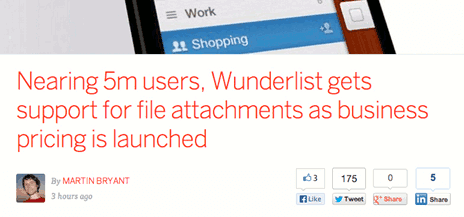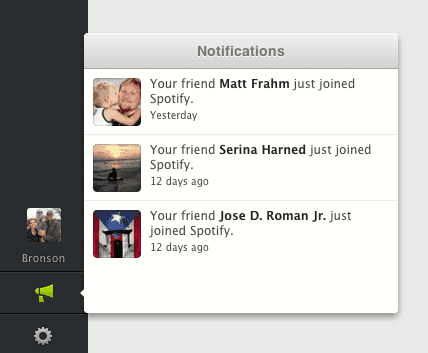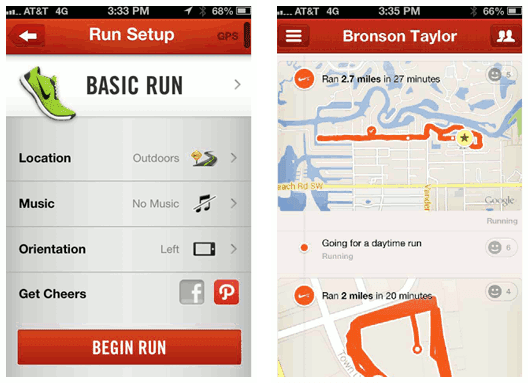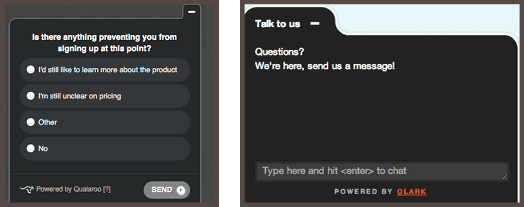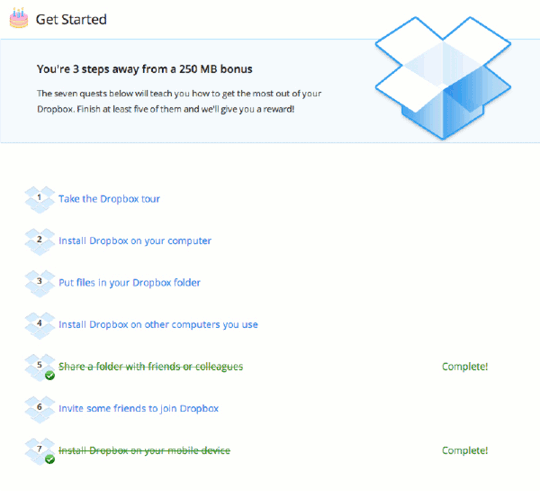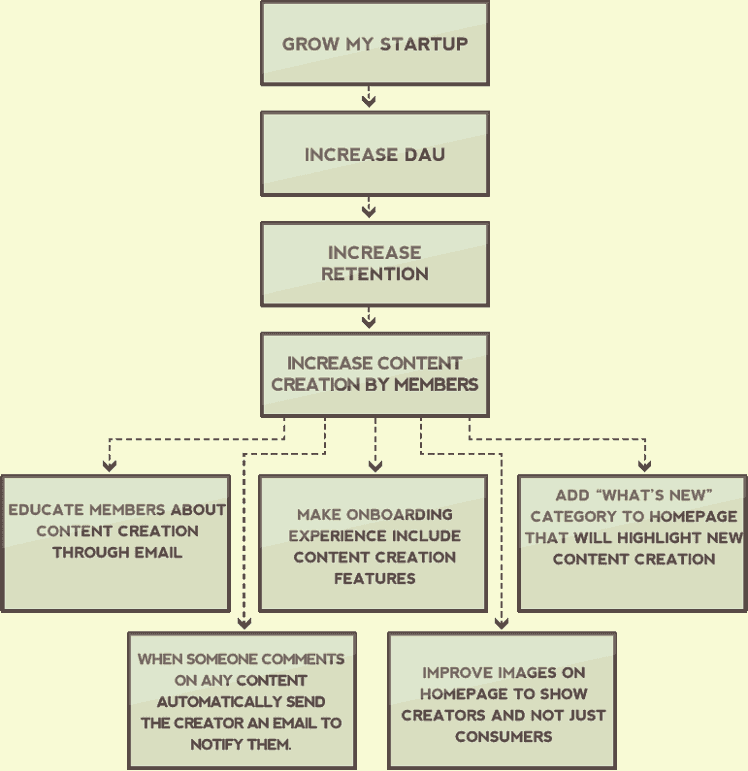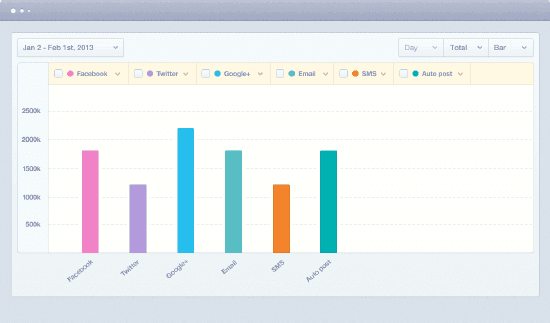Now you have visitors to your product, but that’s the problem. They are just visitors. You’ve found a way to get them to come to your product, but if this is all you do then they will bounce at an incredibly high rate. Your goal is to activate them. Activation is the act of getting them to take an action in your product that you are guiding them toward. Activation is not just the act of them clicking around randomly and not bouncing. Activation is when they do something that you’ve decided beforehand that they should do, something which furthers your goals. Here are some possible activation goals:
- Email address
- Create an account
- Read something
- Comment on something
- Share something
- Buy something
- Fill out something
- Watch something
- Interact with someone
- Friend request someone
Some of these activation goals may seem silly, while others seem relevant, but your particular goals will depend entirely upon your product. If your product is a blog that makes money from advertising then you may want to focus on numbers 1, 3, 4, or 5. If you have an email address then you can message them in the future about new articles. If they read what is already on your site they will see the quality of your journalism and want to read more. If they comment on an article then they will be more apt to come back, especially if others respond to them. If they share your article on Twitter then it will get you more readers. All of these goals lead to eyeballs that will make you more money with advertisers. A different product will have completely different goals.
It is also important to recognize that the fewer goals you have, the more likely you are to achieve them. If you have 5 activation goals then it’s difficult to use the tactics in this chapter to achieve any of them effectively. At a minimum, for a given section of your product you should have one primary activation goal.
Landing Pages
When someone visits your website the use of a landing page can greatly increase your chances of activating them. A landing page is different than your homepage. It might have some of the same elements, but not all. A landing page is a page you create within your product that you can direct people toward for certain campaigns. For instance, if you are always tweeting about certain kinds of things from the company Twitter account then you might make your Twitter bio URL send them to a landing page that highlights those same topics. Here are some of the distinct characteristics of a landing page and why you would use one:
Limited Navigation
If someone comes to a landing page from a specific campaign then this means that you can hide many of the navigational elements, since this will just distract people from completing the goal you have decided on. They’ve already shown interest by being on a landing page in the first place, so you can focus their attention.
Single Call To Action
A landing page only needs one call to action for the same reason that you don’t need many navigational elements. If you give them options then you will lose them, and no one can end up on a landing page unless they came through a specific campaign, which means they are ripe for activation.
Congruous Language
Since you know the source of a person that ends up on a particular landing page then you can tailor the experience for them. You should use language which will appeal to them, even if it doesn’t appeal to your visitors at large. The language, and even imagery, of your landing page should be congruous with their expectations based on the source they came from.
There is a specific kind of landing page which is becoming very popular, and it has some distinct characteristics, and that is the launch page, or coming soon page. A launch page is a landing page that you put up before your product is even public, and the goal is to collect email addresses of visitors so that you can inform them about your product when you do go live. Here are some things to understand about this kind of landing page:
Use it to Get Traffic, Not Just Activations
Before you actually launch is one of the best times to get traffic. You can tell people that they will be let into your product first if they share your launch page with others, or you can only let them sign up on your beta list if they tweet about you first. Get creative.
The Headline and Subhead is Everything
Since you haven’t launched yet you probably won’t have much detail to add to the launch page. This means that the headline and subhead become very important. If those few words don’t get someone’s attention then they will bounce.
Emotional Imagery is a Must
Besides the headline and subhead, you also need a very emotional image. A fullscreen background image is the common practice. Make them feel emotion, despite your lack of content.
Don’t Let the List Grow Cold
As you build a list of people that are interested in the launch of your product you must not let the list get cold. If you don’t email them for months, then suddenly tell them about your launch, your click through rate will be very low. Stay in touch with them through the process of building your product to keep them warm, or don’t even take email addresses until you are within a month (or less) of launch.
If you are trying to create landing pages quickly then you can use a service like unbounce.com, and if you are creating a launch page then you can use a service like Launchrock.
Copywriting
If you want people to take a certain action, and not bounce, then the words you use are more important than you realize. We spend so much time obsessing over visuals that copywriting sometimes takes a back seat. As important as visuals are, if you want someone to know something, or understand something, or do something, then you probably have to use words. Here are some insights around copywriting:
The Headline Should Mention Your Unique Value Proposition
Why is your product unique? What do you do that competitors don’t do, or can’t do. If you don’t tell people that you’re unique then visitors will assume you’re not.
The Subhead Should Further Explain Your Unique Value Proposition
The subhead is smaller text below your headline that further illustrates your unique value. It might give reasons why the headline is true. Use this to take away doubts or clarify the headline.
Long Copywriting is Good for Expensive Items
If you are selling something that costs $500 then you need lengthier copywriting. This will give you a chance to inform, answer objections, and just generally convince them to become activated members.
Short Copywriting is Good for Less Expensive Items
If you are selling something for $20 then long copywriting will bring up more objections than it answers. It will confuse people more than it helps people. For low cost products, short, precise, copy is better.
Different Audiences Will Respond to Different Kinds of Words
Don’t just imitate someone else’s copywriting style. Your words need to fit your audience. You should use jargon if you’re talking to doctors, but not if you’re talking to laymen. You can use slang if you’re targeting kids, but not if your audience is filled with grandmothers.
Use Customer Development to Inform Copywriting
By researching your audience online (message boards, surveys, etc.) you will start to see which words they already use. If you use their own words in your copywriting then you’ll be able to activate them much easier.
Social Proof is Copywriting
It would be wise to use testimonials within your product because humans behave with a herd mentality. If everyone else is doing something then so will I. Social proof is a form of copywriting that will help you activate visitors.
Don’t Forget the Microcopy
Microcopy is the short tooltips, hover boxes, or other text that helps a visitor navigate the interface. Little clues, at the right place, can help people navigate your UI. Confused visitors don’t usually do what you want.
Calls to Actions
We’ve already mentioned it a few times, but calls to action deserve their own section. The best way to get someone to do what you want is by giving them a clear call to action. Leave nothing to their imagination. Tell them where to click and make the button obvious. Tell them who to call and make the phone number prominent. Activate visitors by telling people, in the most explicit way you can, what you want them to do. Below are some examples of great call to actions.
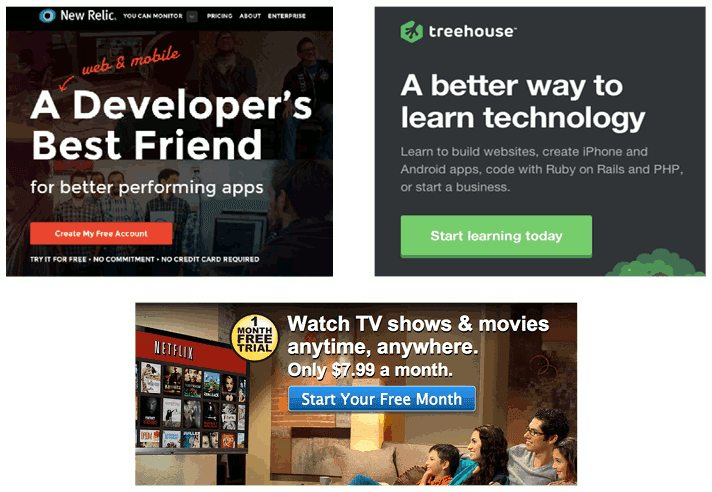
Onboarding
When people arrive on your site it’s like they’ve been dumped in the middle of New York City without a map and no sense of direction. Your job is to give them orientation, and lead them to the places where you want them to go. One of the best ways to guide visitors is through onboarding. Onboarding can take the form of visual directions placed on top the screen, or a series of pages that lead visitors from one place to another. Think of onboarding like a digital tour guide for your product. An explanatory video could even be a part of your onboarding strategy.
Twitter has one of the most talked about onboarding experiences because they carefully guide people from creating an account to using an account, and it’s all through the onboarding. They know that an account that doesn’t follow anyone is kind of useless, so they make following others a part of the signup process.
Another great example of onboarding is InVision. They give you large, obvious, pop ups throughout their product that guide you and tell you what you need to know.
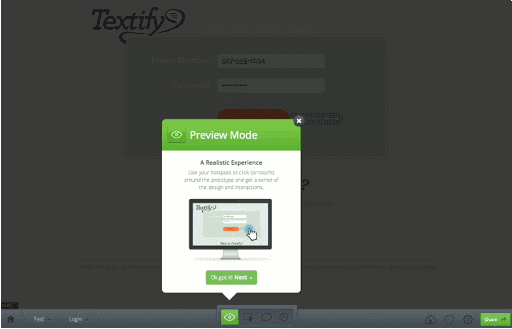
People are not patient, and they don’t care about your product enough to find out how to use it. If you want to activate visitors, making them take certain actions, then you must carefully craft your onboarding experience.
Gamification
There is something about gameplay that is hardwired into the human brain. We love progressing, getting awards, ranking on leaderboards, finishing tasks, leveling up, and having fun while we do it. Gamification is when you use game mechanics within your product, and this can be used to activate members. Gamification can cause someone to complete actions they normally wouldn’t complete. Here are some examples:
Progress
It is common within products to tell people that their profile is only a certain percentage complete. This prompts us to get to 100% because we hate not finishing something. Just by adding a progress bar with a percentage then we have gamified our product.
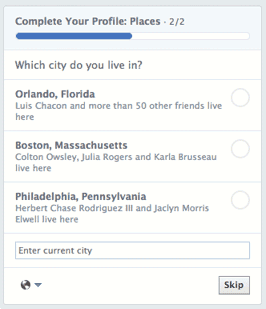
Awards
We are all still in little league baseball. Trophies matter, even if they are meaningless. If you can award something within your product then you will create a gamified incentive for people to take certain actions. Just think about Foursquare. It’s one big baseball game for adults with mayorships and badges instead of cheap trophies.
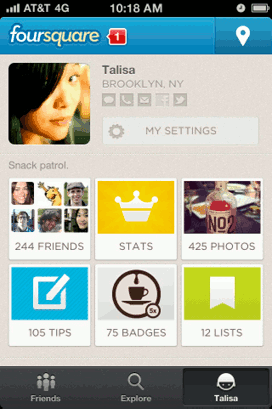
Leaderboards
Just by showing someone their rank you can prompt them to compete. If you let someone know that they are in 3rd place for most comments on your message board there is a good chance they’ll take actions to get in 2nd place. Leaderboards can activate people to take certain actions.
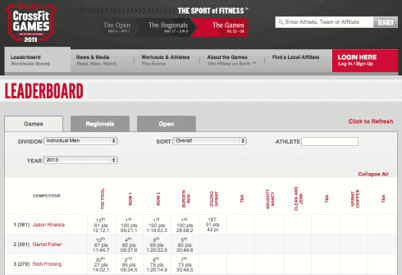
There are countless ways to gamify your product, but you have to think about your product as a game (even if it is a B2B app).
Pricing Strategies
Getting someone to make a purchase is really just a unique kind of activation. You are getting a visitor to take a certain action, that action just happens to be making a purchase. There are a number of best practices around activating people to make a purchase. They may not all apply to your situation, but some of them probably will.
Perfect Price Discrimination
Pricing is an important aspect of activating people to make a purchase. There is something called perfect price discrimination which is the act of creating a pricing structure that charges based on the consumer’s purchasing power. Ecquire does this well by making their lowest tier only support basic integrations. This is everything except Salesforce. They know if you are using Salesforce then you can afford to pay for an expensive plan.
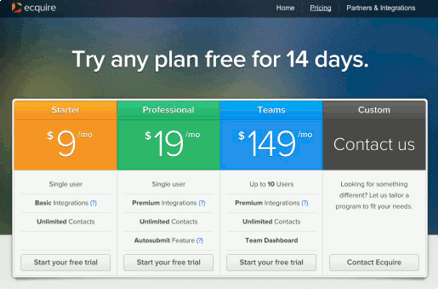
Multiple Tiers
Another popular strategy to activate purchases is to have three pricing tiers. Just the fact that there is a more expensive option makes you feel like you’re not wasting money, and you are getting a good deal. Having a pricing tier below you can make you feel like you’re not a cheap person. Options give people confidence to buy.
Suggestive Tier Naming
If you name your pricing tiers something vague like gold, silver, and bronze, then you don’t really help people discover which tier is good for them. By naming the tiers things like “Starter,” “Professional,” or “Team,” you are giving people the confidence that they are in the correct tier.
Free Trials
People are afraid to make an irreversible mistake with their money. If you give them a money back guarantee, or a free trial of some kind, then you are taking the risk away from them and placing it on yourself.
Discount Codes
One of the most powerful forces, in terms of getting someone to make a purchase, is a discount code. But there is a trick that makes discount codes even more effective. If you include a time limit on the discount then you force people to make a decision. Udemy is a great example of this kind of activation tactic. They send out emails on a regular basis which include discount codes that are only valid for a limited time.

Bundling
Another way to get people to make a purchase is through bundling your product with other products. If you can overwhelm people with value then they are more willing to make a buying decision. Hacker Bundle is a good example of a service that uses this activation tactic.
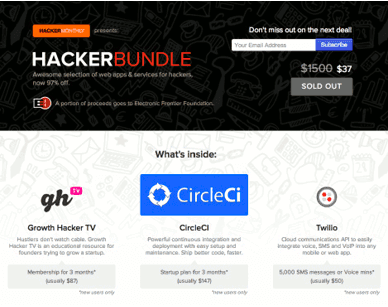

http://www.quicksprout.com/user-activation/
Read more here - http://review-and-bonuss.blogspot.com/2019/04/how-to-activate-users.html




